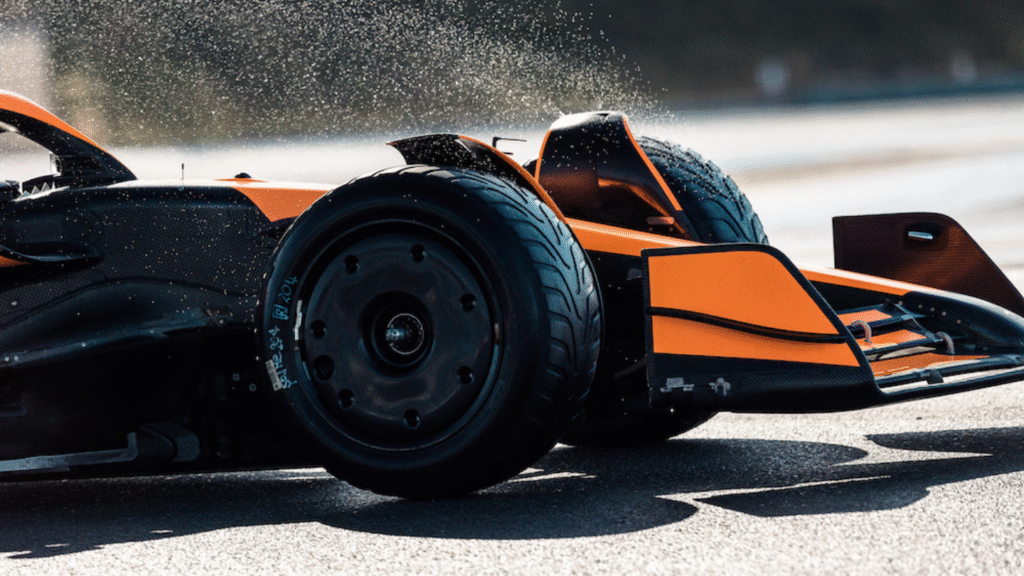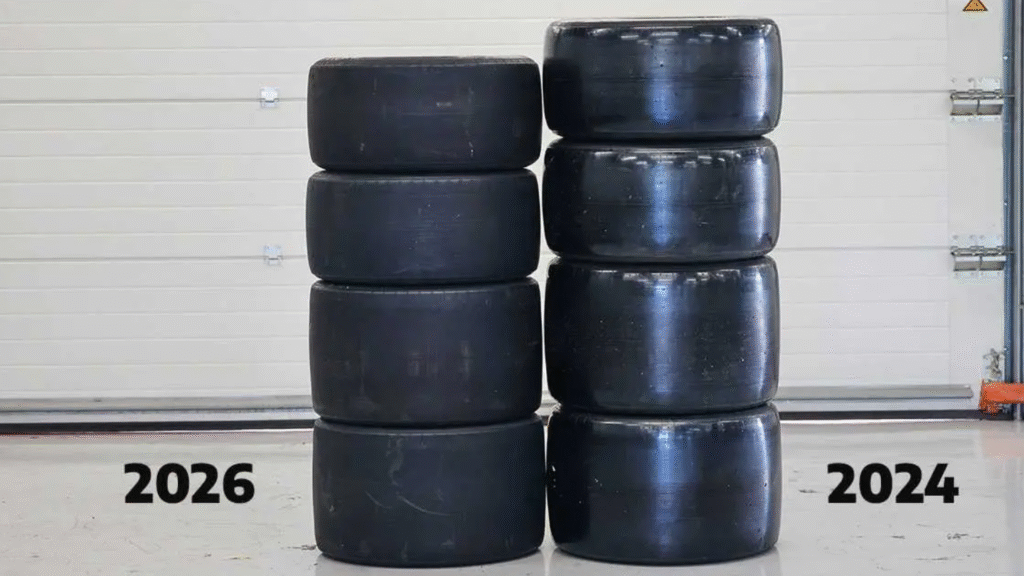Two Big Tyre Changes Coming to F1 in 2026: What You Need to Know

As Formula 1 prepares for its major technical overhaul in 2026—focused on lighter, more agile cars—Pirelli has revealed two significant tyre changes that could reshape both qualifying and wet-weather racing.
While the spotlight has been on narrower tyres helping reduce car weight, Pirelli’s latest developments go deeper. The Italian supplier is making key revisions to its softest compound (C6) and is also redesigning its extreme wet tyre to make it a proper racing solution—not just one used behind the Safety Car.
🔩 Narrower Tyres, Lighter Cars
Starting in 2026, front tyres will be reduced by 25mm and rear tyres by 30mm, cutting total tyre weight by an estimated 1.6 kg per car. This reduction contributes directly to F1’s push for lighter and more nimble machinery, in line with the sport’s new sustainability and efficiency goals.
Tyre Size Comparison: 2025 vs 2026
| Tyre Type | Current Width | 2026 Width | Weight Saving |
|---|---|---|---|
| Front | ~305mm | ~280mm | ~300g each |
| Rear | ~405mm | ~375mm | ~500g each |
| Total per car | — | — | ~1.6 kg |

⚡ Making the Softest Tyre Softer: The C6 Evolution
Pirelli introduced the C6 compound this year, designed for low-energy tracks like Monaco. But it has since been deployed more widely, including at Imola and the Canadian GP, in an attempt to spice up strategy and qualifying.
However, teams have often struggled to extract peak performance from the C6 during qualifying, prompting some to stick with the more familiar C5 compound instead—even if it’s technically slower.
Now, Pirelli wants to re-engineer the C6 to make it the go-to qualifying tyre in 2026. The goal is to increase the lap time gap between the C5 and C6 from the current ~0.2 seconds to ~0.5 seconds, without adding additional degradation.
🗣️ “The C6 is doing its job… but I want a bigger performance gap to the C5,”
said Pirelli Motorsport Director Mario Isola.
“We want it even more aggressive but with similar degradation, to create more strategy options.”
If successful, this could lead to more unpredictable qualifying sessions and multi-stop races—something the sport has actively encouraged.
🌧️ Wet Tyre Revolution: Making the Extreme Wet Usable
F1’s current extreme wet tyre has rarely been used for actual racing. More often, it’s seen during formation laps or behind a Safety Car due to its poor performance and the visibility issues caused by heavy spray.
Pirelli aims to change that narrative in 2026. Following a recent wet tyre test with Ferrari at Fiorano, Pirelli is working on a revised extreme wet compound with a lower crossover point—the track condition threshold at which teams switch from extreme wets to intermediates.

🗣️ “We want the extreme wet to be a real racing tyre, not just a safety tyre,”
explained Isola.
“We’re targeting a crossover around 115–116%, compared to the current 118%.”
This means the tyre will become competitive in milder wet conditions, giving teams more flexibility and reducing reliance on intermediates.
🔎 What This Means for 2026
Together, these changes reflect a larger push toward making racing more dynamic under varying conditions. The more aggressive C6 could improve qualifying spectacle, while a more usable extreme wet would reduce session delays or red flags in wet races.
Summary of 2026 Tyre Changes
| Change | Impact |
|---|---|
| Narrower Tyres | Reduced car weight by ~1.6 kg |
| More Aggressive C6 | Increased lap time delta for better qualifying |
| Revised Extreme Wet | More usable in races, not just behind SC |
🏁 Final Thoughts
As Formula 1 enters a new era in 2026, tyres will play a bigger role than ever in shaping race weekends. From reshaped compounds to smarter wet-weather tools, Pirelli’s updates are a reminder that even the smallest rubber on the track can make a massive difference in how the championship unfolds.
Stay with F1Grids for all the latest updates on 2026 regulations, race weekend strategies, and tyre technology.
#F1 #F12026 #Pirelli #TyreChanges #C6Compound #WetTyres #Formula1 #F1Grids





